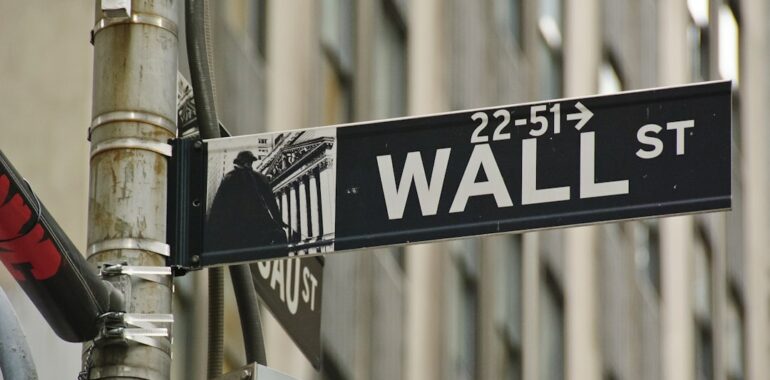Piggly Wiggly vs Wall Street: The Original Stock Short Squeeze Battle

SEO Meta Description: Discover how Clarence Saunders of Piggly Wiggly executed the first stock short squeeze against Wall Street, setting the stage for modern battles between retail investors and institutional traders.
Introduction
In the annals of financial history, the clash between Wall Street vs retail investors has often been portrayed as a modern phenomenon, epitomized by the GameStop saga of 2021. However, the roots of this David vs. Goliath battle stretch back nearly a century. This is the story of Clarence Saunders, the visionary behind Piggly Wiggly, who attempted an original stock short squeeze against Wall Street in the early 1920s.
The Rise of Piggly Wiggly
Clarence Saunders, a Southern entrepreneur, revolutionized the grocery industry with the establishment of Piggly Wiggly in Memphis, Tennessee, in 1916. Departing from the traditional model where customers provided a shopping list to a clerk, Saunders introduced the self-service concept, allowing shoppers to select their own products from fully stocked shelves. This innovation not only improved efficiency but also significantly enhanced the shopping experience, leading to rapid expansion. By 1922, Piggly Wiggly boasted over 1,200 stores across the United States.
The Wall Street Confrontation
Despite the company’s success, Wall Street viewed Piggly Wiggly’s stock as a lucrative target for short sellers. These institutional traders anticipated a decline in stock value and sought to profit by borrowing shares to sell at high prices, intending to repurchase them at lower rates later. Clarence Saunders, however, was undeterred. Determined to protect his company from Wall Street’s financial maneuvers, Saunders embarked on an ambitious plan to orchestrate a short squeeze.
The Short Squeeze Strategy
To counteract the short selling, Saunders leveraged his personal wealth and secured a substantial loan of $10 million (equivalent to approximately $150 million today). He launched an aggressive buying spree, acquiring over half of Piggly Wiggly’s outstanding shares within weeks. By late 1922, Saunders controlled 99% of the company’s stock. His strategy aimed to drive up the stock price, forcing short sellers to buy back shares at inflated rates, thereby incurring significant losses.
Market Manipulation and Repercussions
Saunders’ actions did temporarily elevate Piggly Wiggly’s stock price from $39 to nearly $60. However, his bold moves soon attracted scrutiny from the New York Stock Exchange (NYSE), which lacked federal securities regulations at the time. The NYSE intervened, suspending trading of Piggly Wiggly’s stock due to concerns over market manipulation and the excessive concentration of holdings. This suspension led to a rapid decline in the stock’s value, undermining Saunders’ position and exposing the vulnerabilities in his strategy against Wall Street.
The Aftermath and Legacy
The failed short squeeze had profound implications for Clarence Saunders and Piggly Wiggly. Saunders faced immense financial pressure, ultimately leading to his bankruptcy in 1923. Despite his innovative contributions to the grocery industry, his confrontation with Wall Street resulted in the loss of his empire and reputation.
However, Saunders’ legacy endured. His relentless fight against institutional traders foreshadowed future conflicts between retail investors and Wall Street giants. The Piggly Wiggly episode remains a testament to the enduring struggle of small investors challenging the established financial order.
Lessons for Modern Retail Investors
The historical battle of Wall Street vs retail investors underscores several key lessons relevant to today’s market dynamics:
-
The Power of Collective Action: Just as Clarence Saunders attempted to leverage his holdings against short sellers, modern retail investors can use collective platforms to influence market movements.
-
Regulatory Evolution: The absence of federal regulations in Saunders’ time highlights the importance of robust regulatory frameworks to ensure fair market practices, a lesson that continues to inform current financial policies.
-
Resilience and Innovation: Saunders’ journey illustrates the critical role of resilience and innovation in navigating financial challenges, inspiring contemporary investors to think creatively in their market strategies.
Conclusion
The story of Piggly Wiggly vs Wall Street serves as a foundational narrative in the saga of Wall Street vs retail investors. Clarence Saunders’ audacious attempt to execute a short squeeze offers invaluable insights into the complexities of market dynamics and the timeless nature of investor struggles against institutional power. As we witness similar confrontations in the modern era, remembering these historical precedents enriches our understanding of the financial landscape.
Are you passionate about the intersection of retail investing and market dynamics? Join the conversation and stay informed about the latest developments shaping the investment world.




